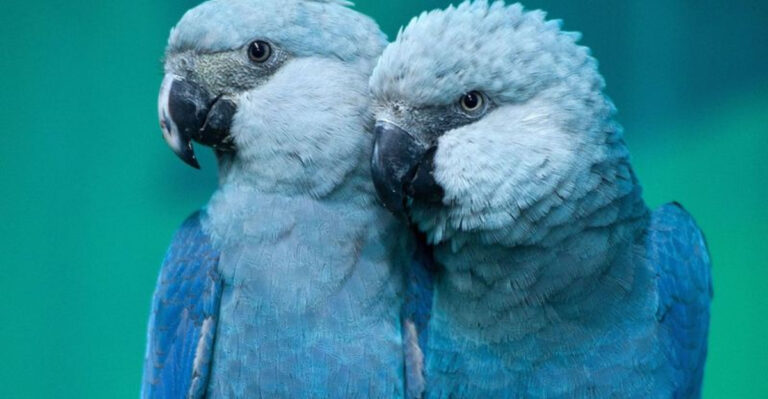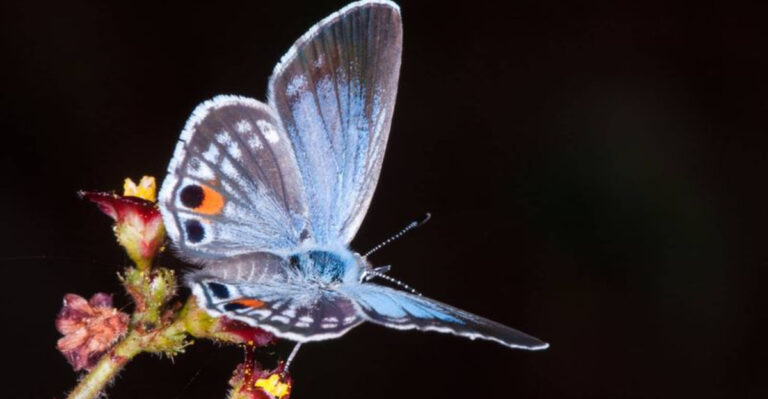Tips For Keeping Blackbirds And Grackles From Overrunning Your Bird Feeder
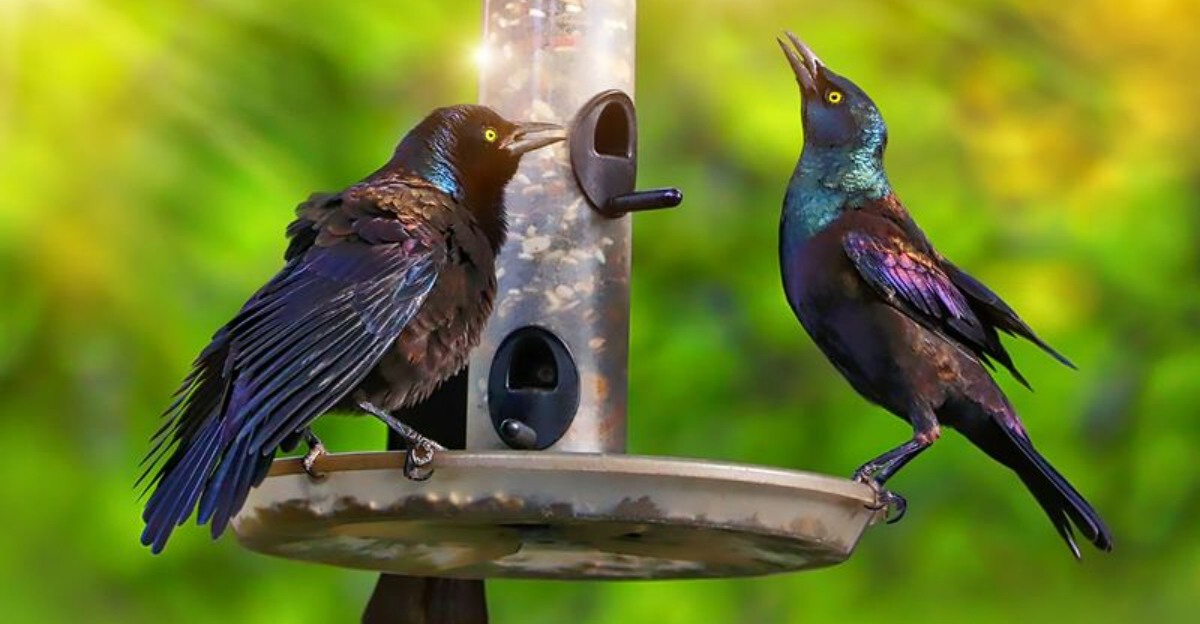
Ever noticed your bird feeder has become a blackbird and grackle party central? These large, aggressive birds can quickly empty feeders and chase away smaller songbirds.
While they’re part of nature’s balance, their bullying behavior and voracious appetites can frustrate even the most dedicated backyard birders. Here are ten effective methods to discourage these feathered bullies without harming them.
1. Switch To Safflower Seeds
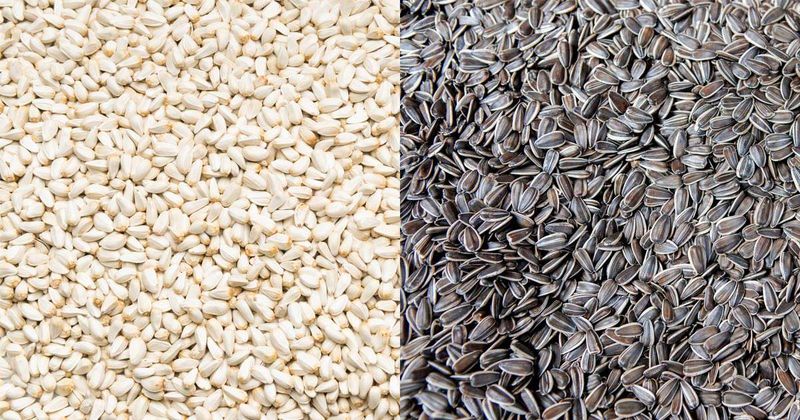
Safflower seeds have a bitter taste that blackbirds and grackles typically avoid, but cardinals, chickadees, and finches love them! The hard shell requires more effort to crack open, discouraging lazy feeder bullies.
Many backyard birders report dramatic decreases in blackbird populations after making this simple seed switch. Bonus: squirrels often dislike safflower too!
2. Use Cage-Style Feeders
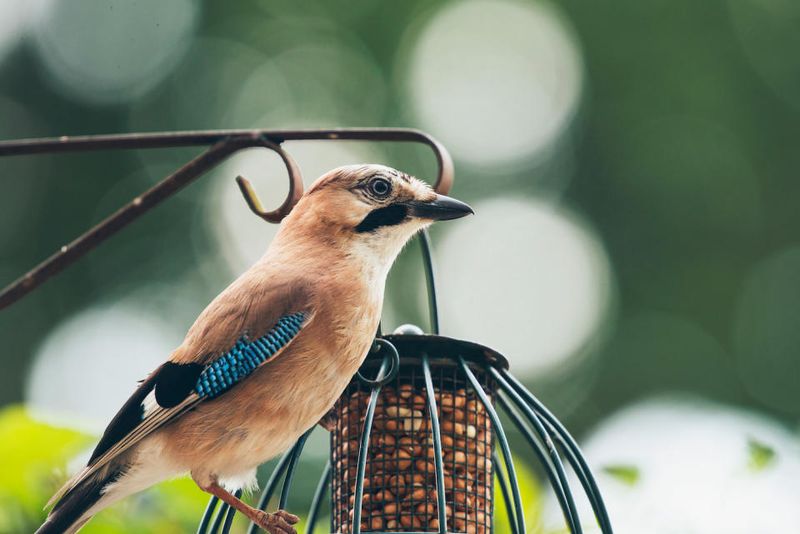
Cage feeders feature small openings that allow tiny birds to enter while keeping larger bullies out. The metal mesh creates a physical barrier that frustrates blackbirds but welcomes chickadees and finches.
Look for feeders with openings around 1.5 inches – perfect for small songbirds but too tight for grackles. Some models even have adjustable ports to fine-tune access.
3. Install A Weight-Activated Feeder
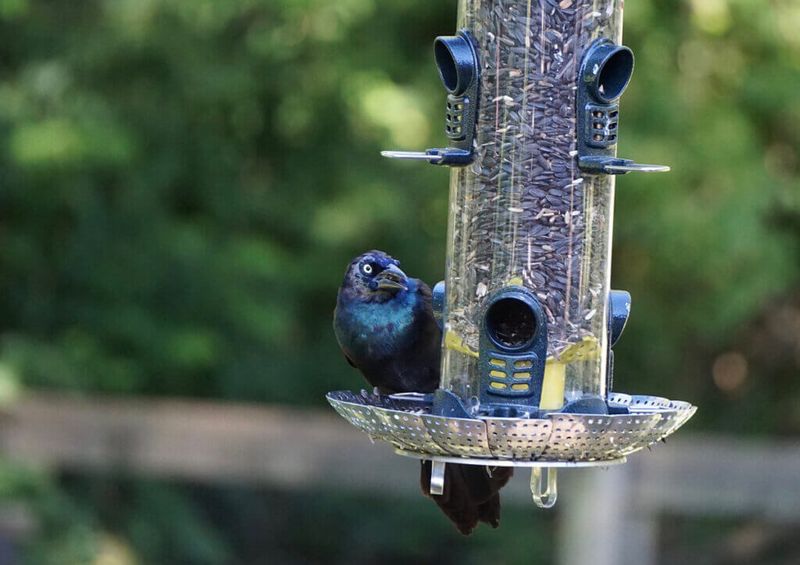
These clever feeders close access ports when heavier birds land. Since blackbirds and grackles weigh more than songbirds, the feeding ports shut automatically when these heavyweights arrive.
Many models allow you to adjust the sensitivity, letting you control exactly which birds can feed. The mechanism works without batteries or electricity—just simple physics at work!
4. Offer Nyjer Seed Feeders
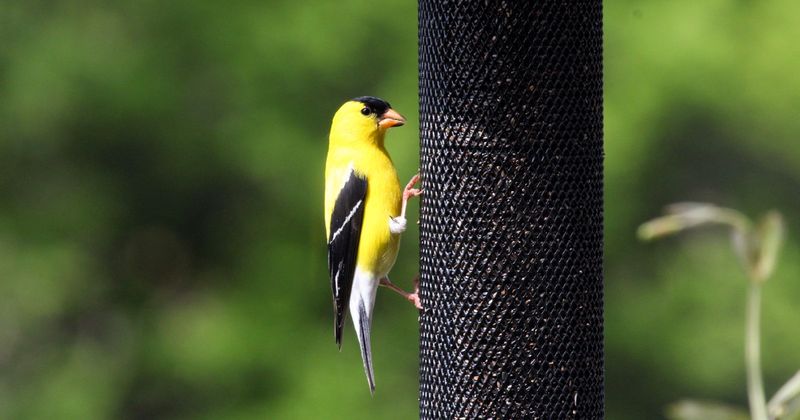
Tiny nyjer seeds (sometimes called thistle) attract goldfinches, siskins, and other small birds but hold little appeal for blackbirds. The specialized tube feeders with tiny ports make it difficult for larger birds to feed efficiently.
These high-oil seeds spoil quickly, so purchase fresh supplies and clean feeders regularly. Your goldfinches will thank you with their bright colors and cheerful songs!
5. Try Upside-Down Suet Feeders
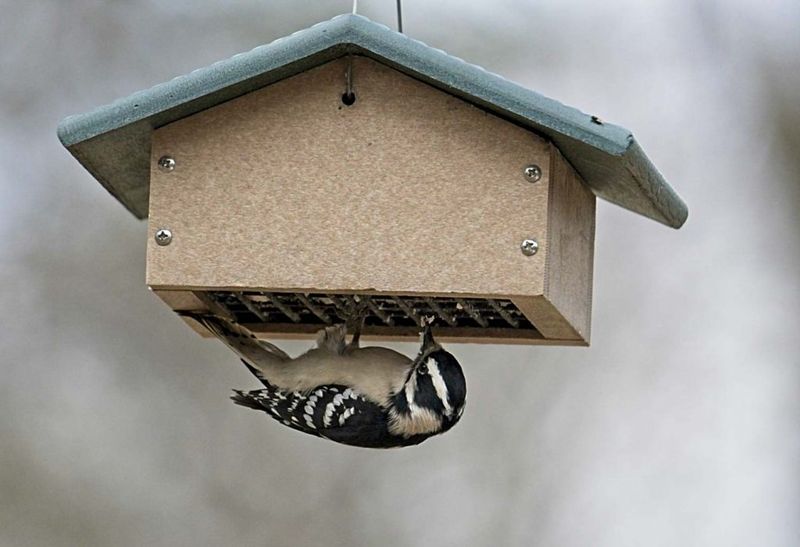
Blackbirds and grackles struggle to feed while hanging upside down, unlike nimble woodpeckers, chickadees, and nuthatches. Special suet feeders force birds to hang underneath to access food.
The awkward position frustrates larger bully birds who eventually give up. Meanwhile, acrobatic smaller species happily dangle and feast! These feeders work year-round but are especially effective in winter.
6. Remove Ground Feeding Areas
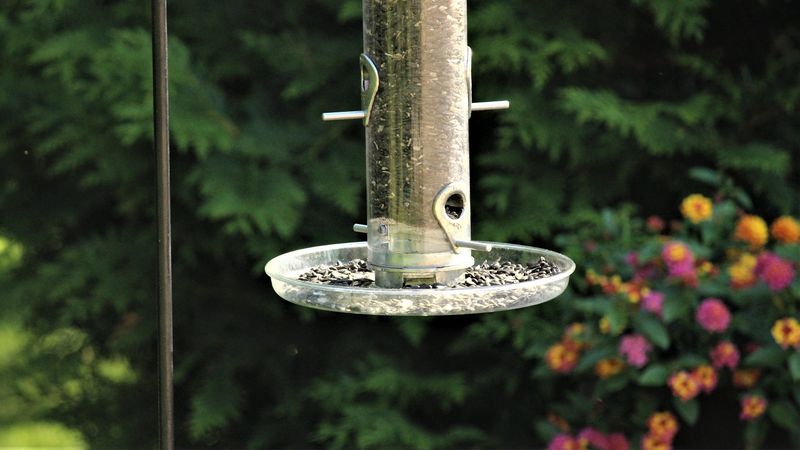
Blackbirds and grackles prefer feeding on the ground where scattered seeds accumulate. Install seed catchers under hanging feeders to prevent waste from becoming a buffet for these unwanted guests.
Regular cleanup of spilled seed helps too. For extra effectiveness, consider moving feeders away from open areas where ground-feeding birds feel comfortable. Dense shrubs nearby discourage large flocks.
7. Temporarily Remove All Feeders
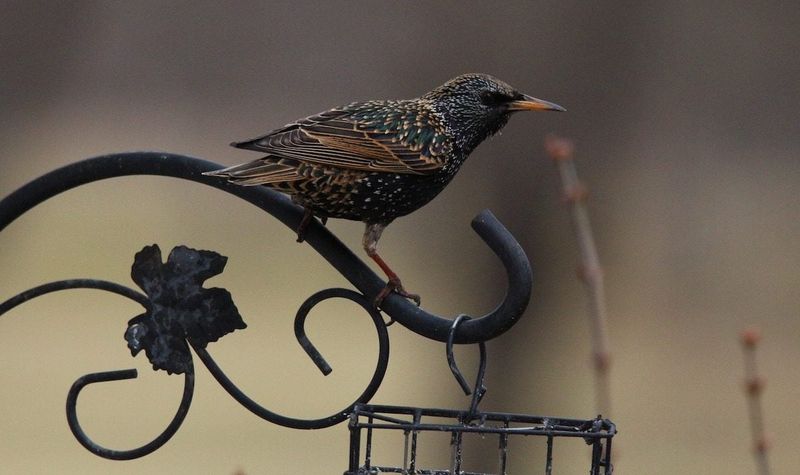
When blackbird invasions become overwhelming, sometimes the best strategy is a feeding timeout. Remove all feeders for 1-2 weeks, forcing the hungry flock to find food elsewhere.
Once they establish new feeding patterns, they’re less likely to return immediately. Reintroduce feeders gradually, implementing other strategies simultaneously. Smaller birds typically return quickly while blackbirds may stay away.
8. Use Visual Deterrents
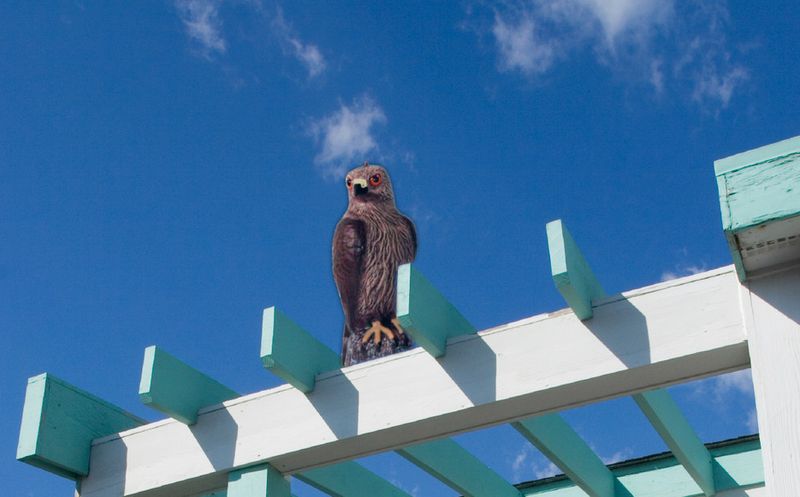
Reflective tape, old CDs, or hawk silhouettes create movement and flashes that spook nervous blackbirds. Unlike smaller birds who quickly adapt, blackbirds and grackles tend to remain wary of these visual scares.
Move deterrents regularly to prevent birds from getting used to them. Garden supply stores sell specialized options, but homemade versions work just as well. The key is unpredictable movement and reflection.
9. Feed During Different Hours
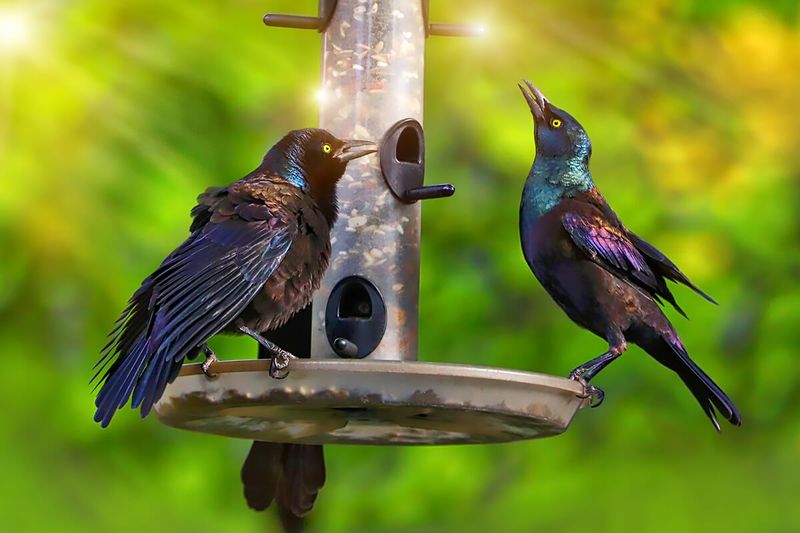
Blackbirds and grackles follow predictable feeding schedules, typically mid-morning and late afternoon. Try putting feeders out only during early morning or evening when smaller birds feed but bullies are less active.
This requires more effort but pays off by allowing songbirds exclusive access. Many smaller species begin feeding at dawn, well before blackbird flocks arrive. A timed feeder can automate this process!
10. Create Separate Feeding Stations
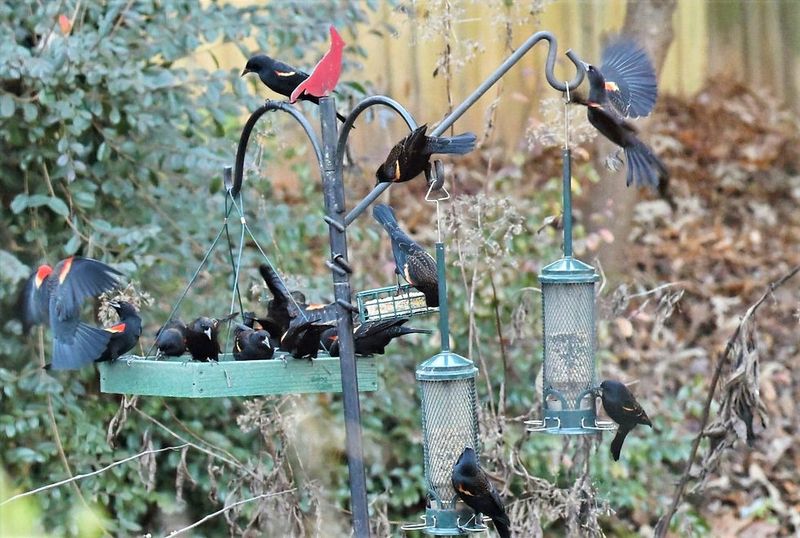
Set up a decoy feeding area away from your main feeders. Fill it with inexpensive cracked corn or milo to attract blackbirds, keeping them busy while songbirds enjoy premium seeds elsewhere.
Place this station in an open area blackbirds prefer, while positioning songbird feeders near protective shrubs. This diversion tactic satisfies everyone – blackbirds get fed without monopolizing the good stuff!

